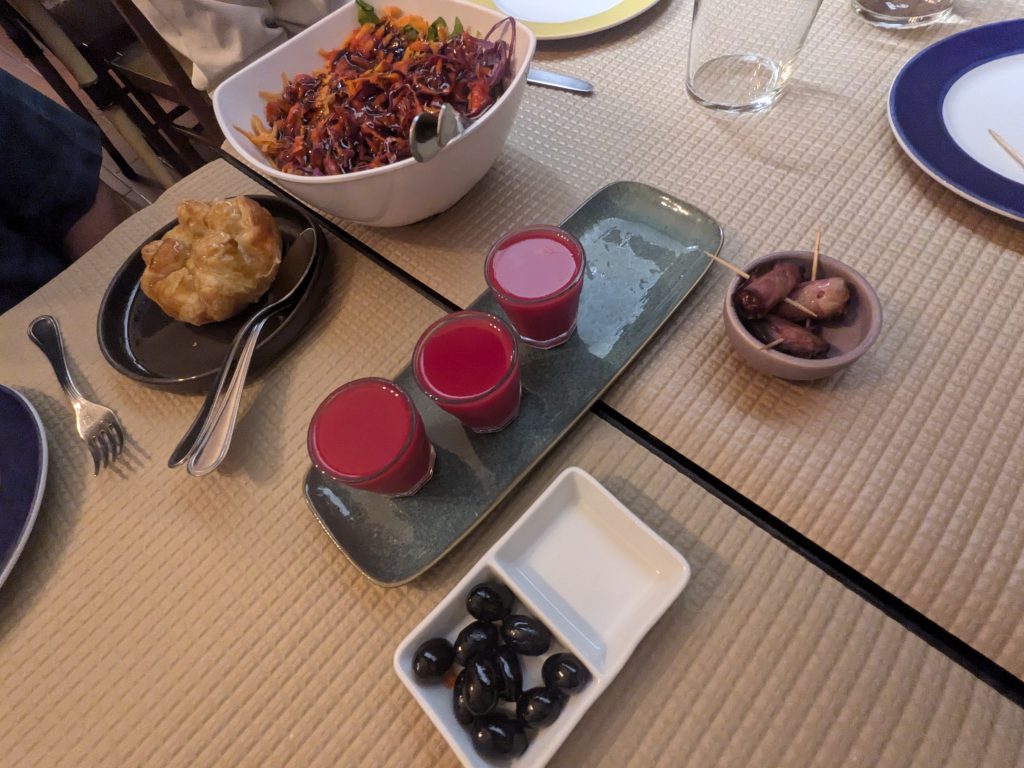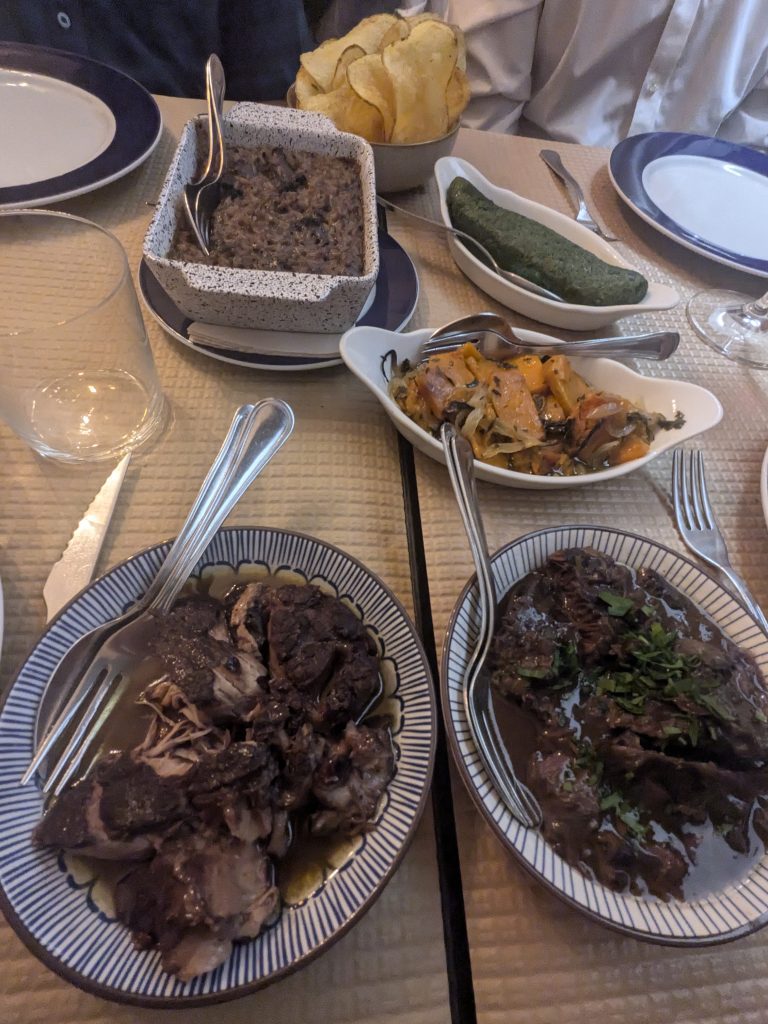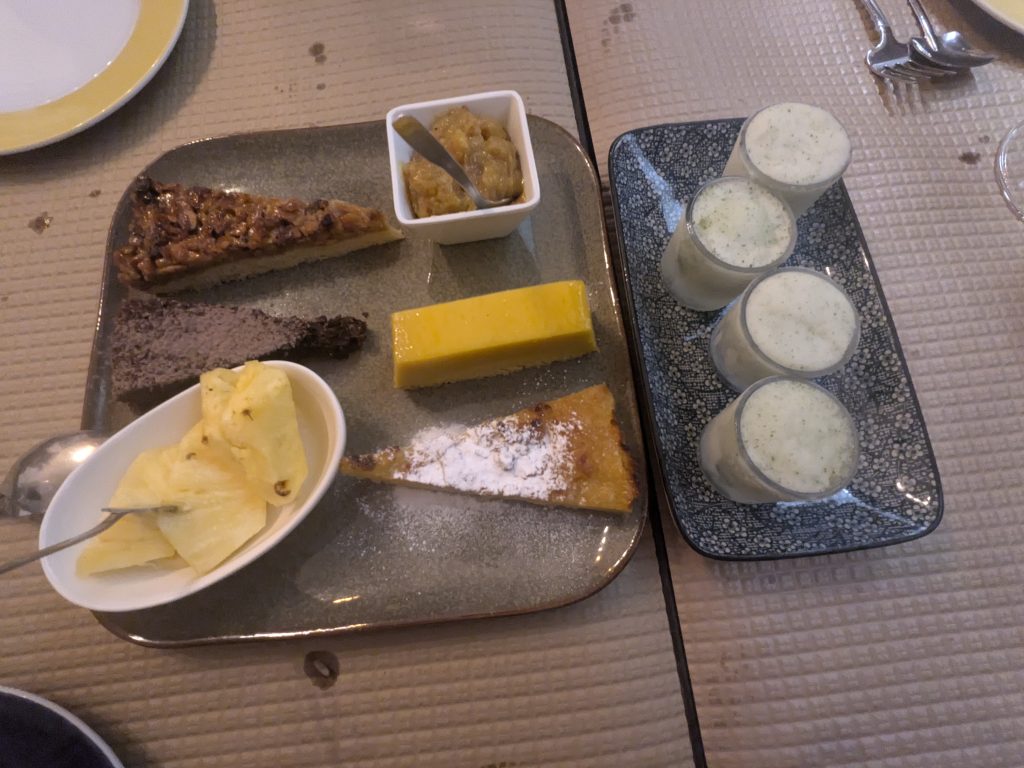Sep 19 – Alcobaca to Evora
Travel day to Evora. We left Alcobaca around 9.30 and headed to the popular walled village of Obidos. It’s crowded during the day with bus loads of tourists. We got there around 10 and we’re able to separate ourselves a bit by taking side roads. Followed a basic walk from Rick Steve’s book and a GPS app I bought. We covered a lot of ground in a few hours – popped into several churches, drank gingko cherry liquour in a famous little bar, enjoyed lattes and orange cake in a coffee shop, climbed to the castle/fortress at top of a hill. The most fun for me was checking out the three bookstores. The last one was a gold mine. A book trade with hundreds of English books, free for trade or a donation to food bank. I found two Greece themed novels by Victoria Hislop and one by Joanne Harris.
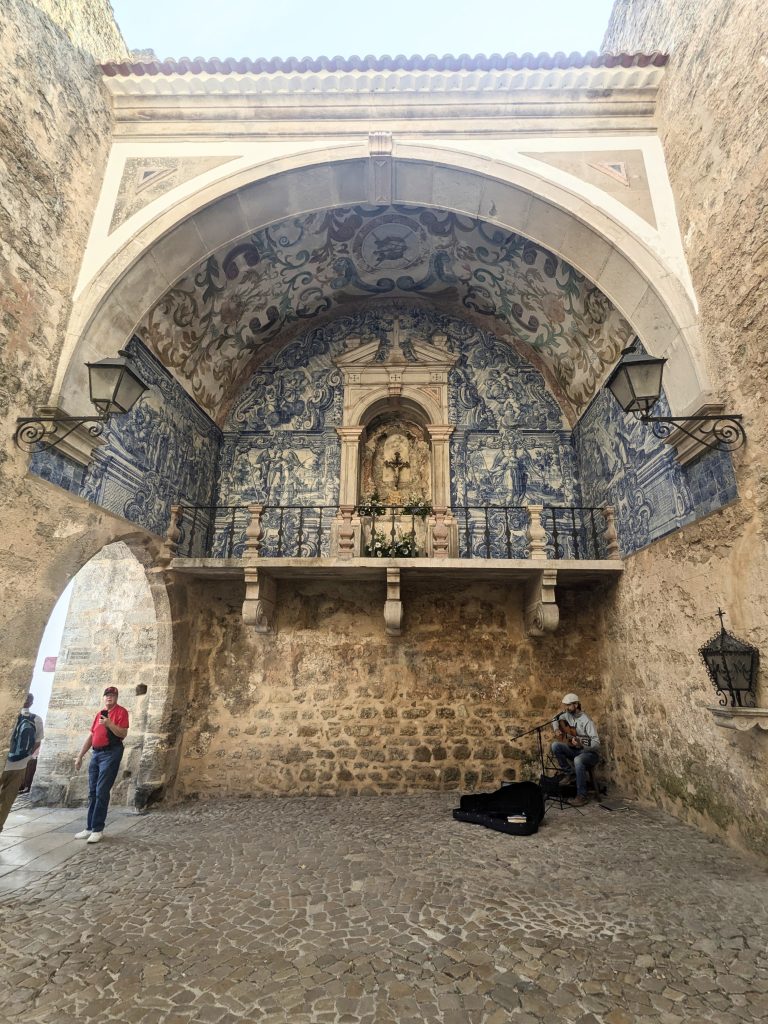
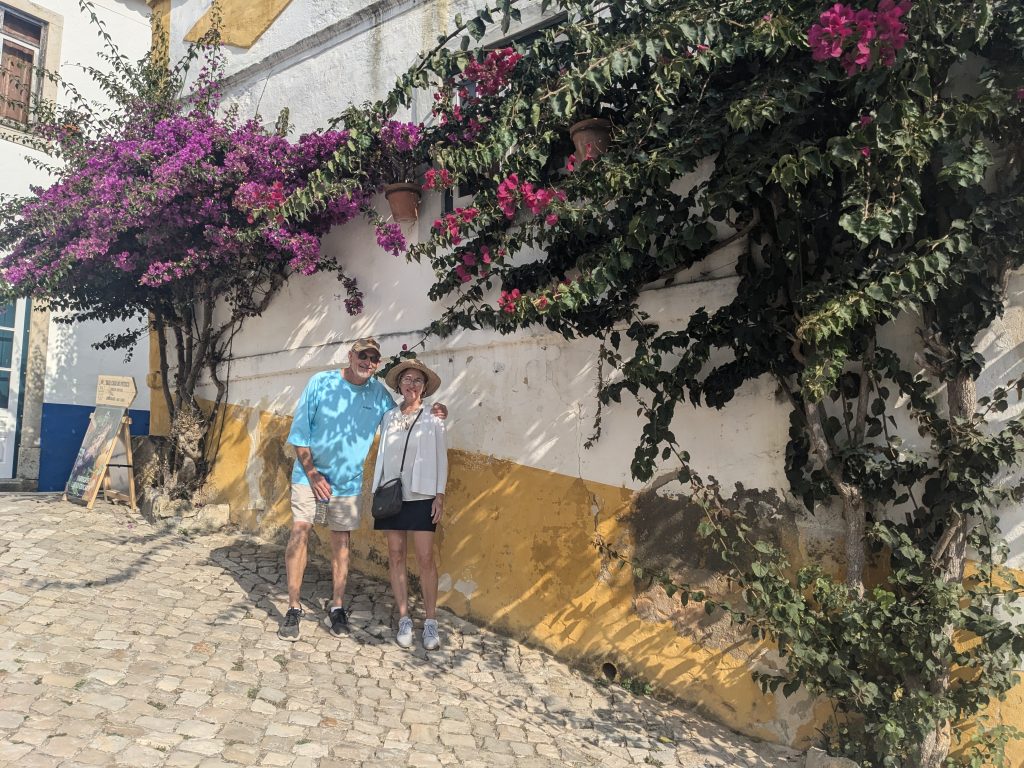
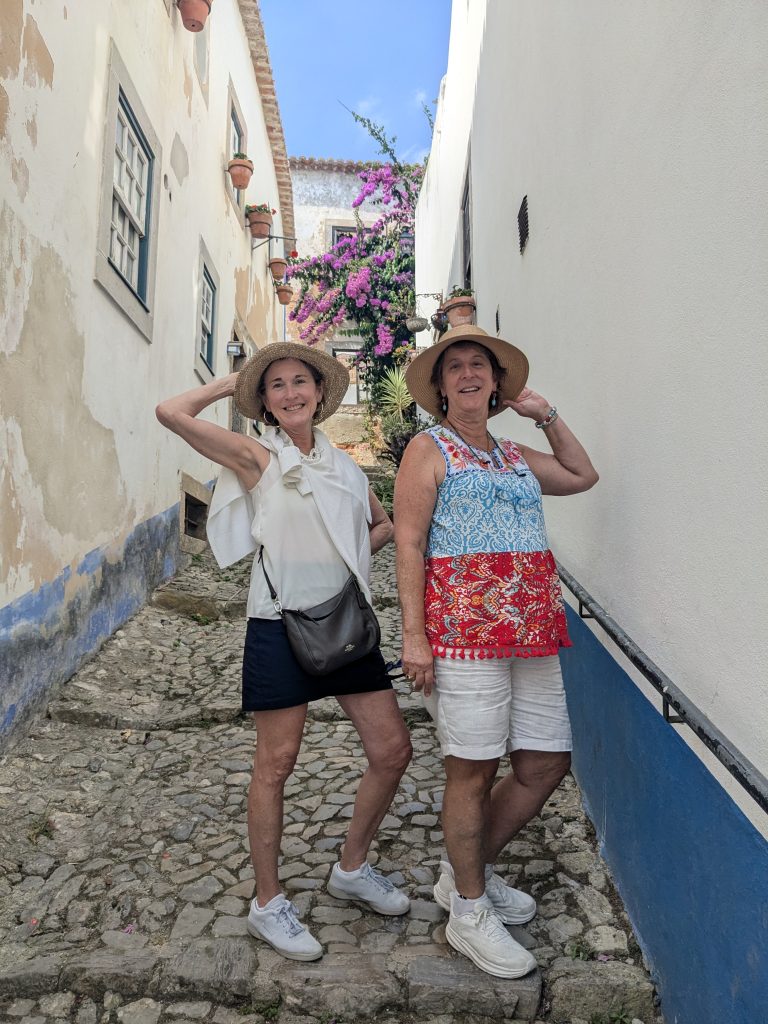
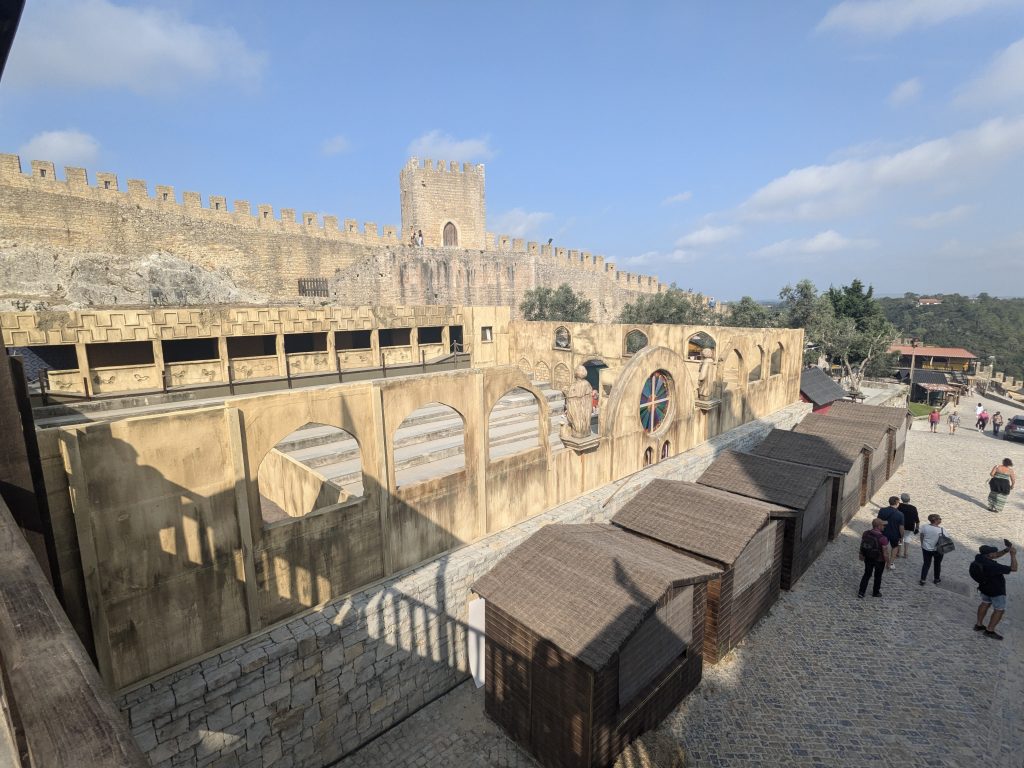
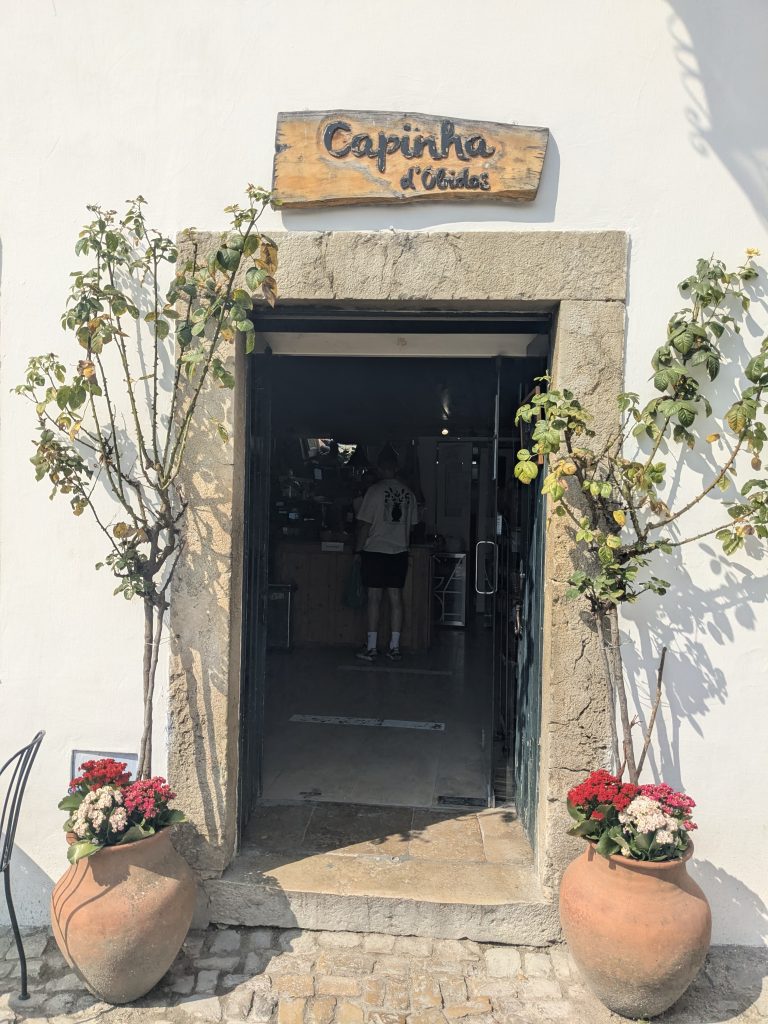
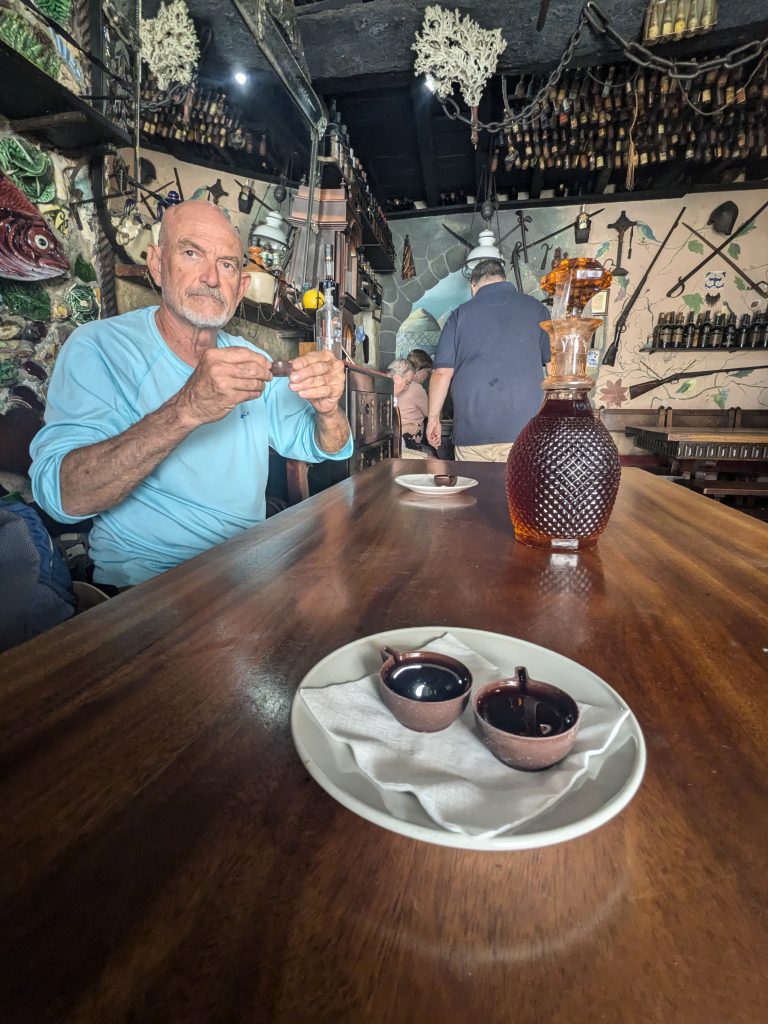
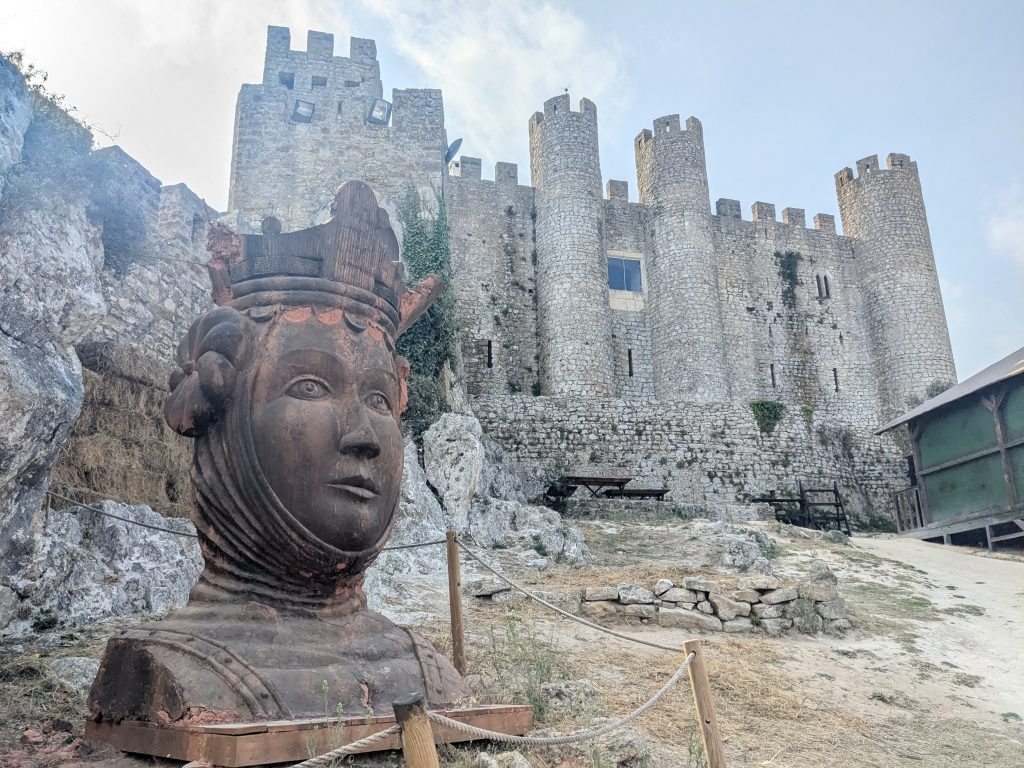
I talked the group into another beach stop, a little out of our way, in Peniche. Located in a Peninsula on far western side of Portugal, Peniche was worthy of the 30 minute drive. There is a huge flat sandy beach on the north side of the peninsula and then rocky cliffs with beautiful views of the Atlantic ocean on the western coast. We stopped at Miradouro da Cruz dos Remédios. Beautiful spot with interesting geological rock formations. The Berlenga islands are visible from this point. There is a simple cross on the water side of the street with a sign. Across the street is a small chapel – Nossa Senhora dos Remédios Church.
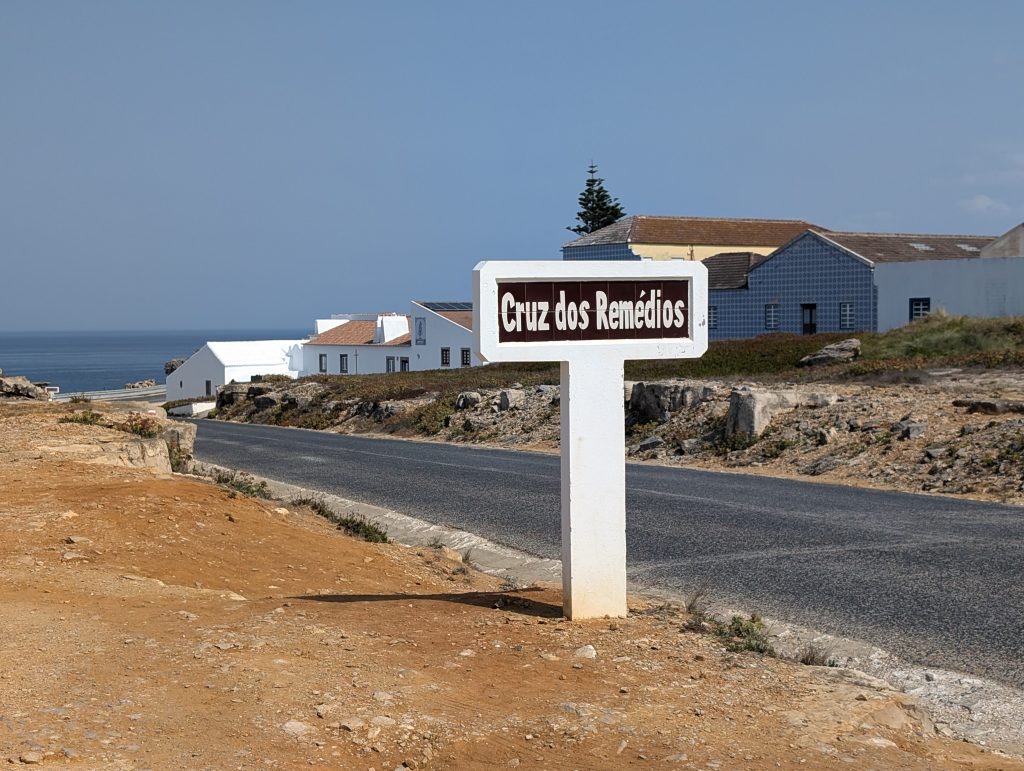
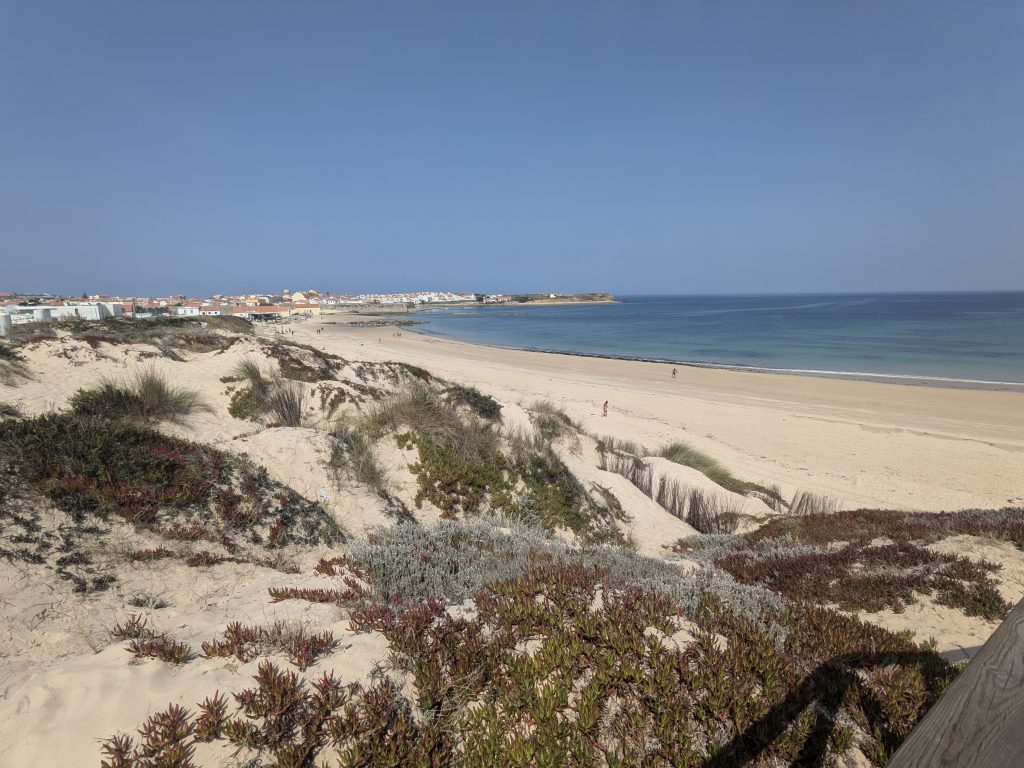
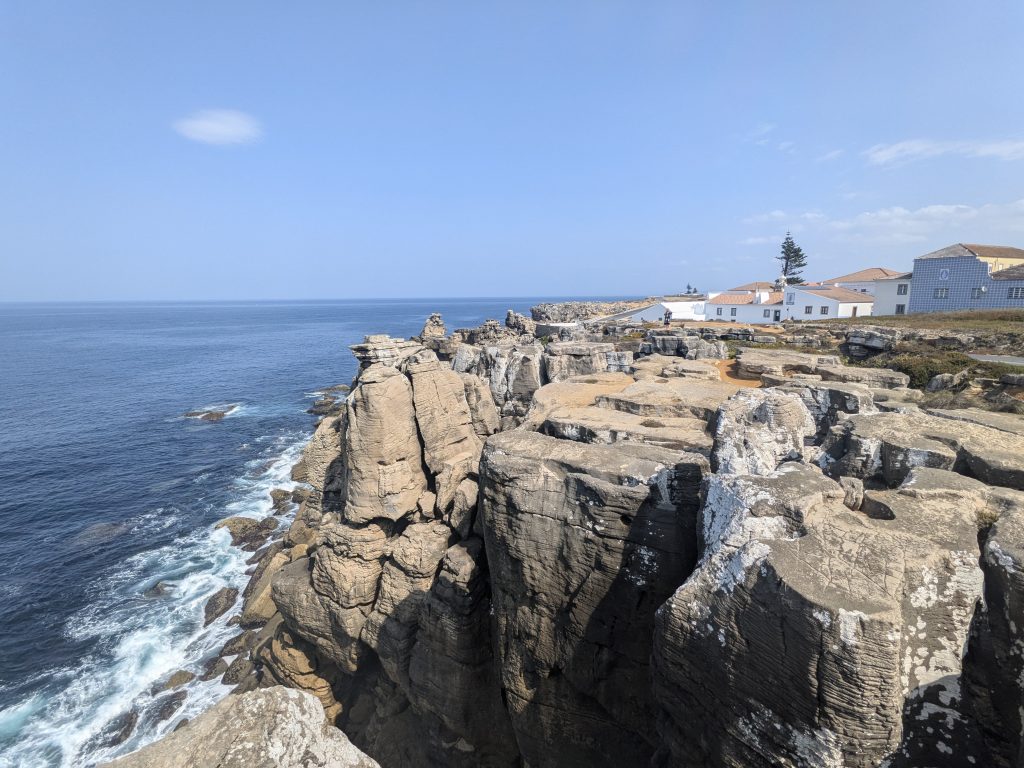
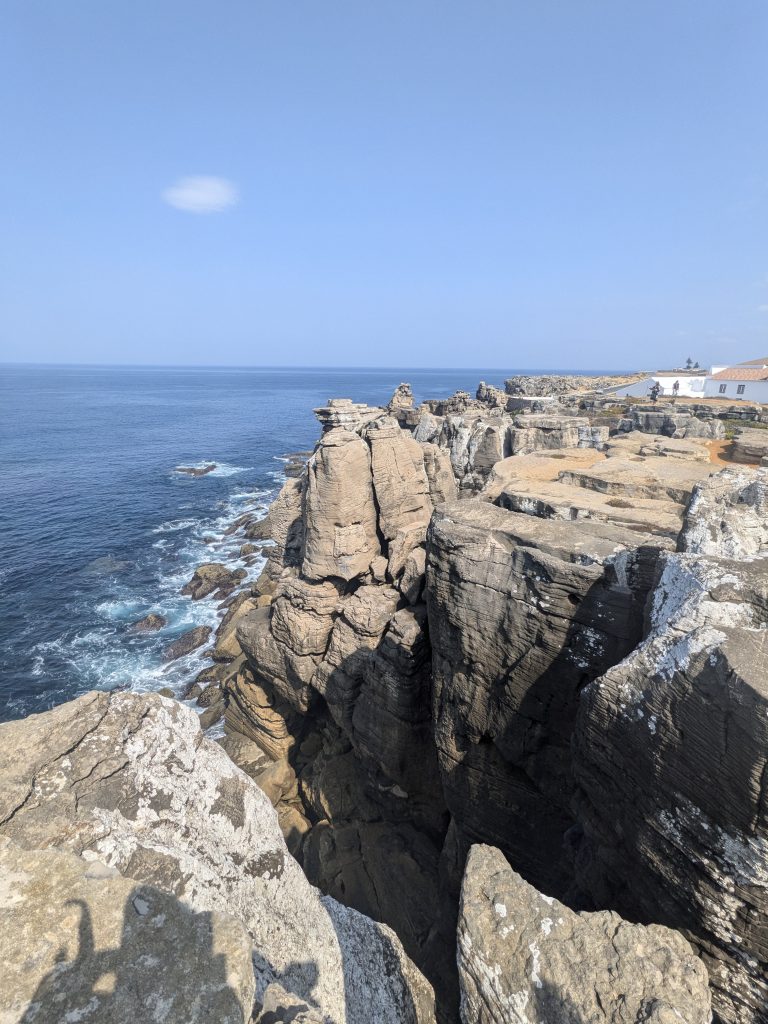
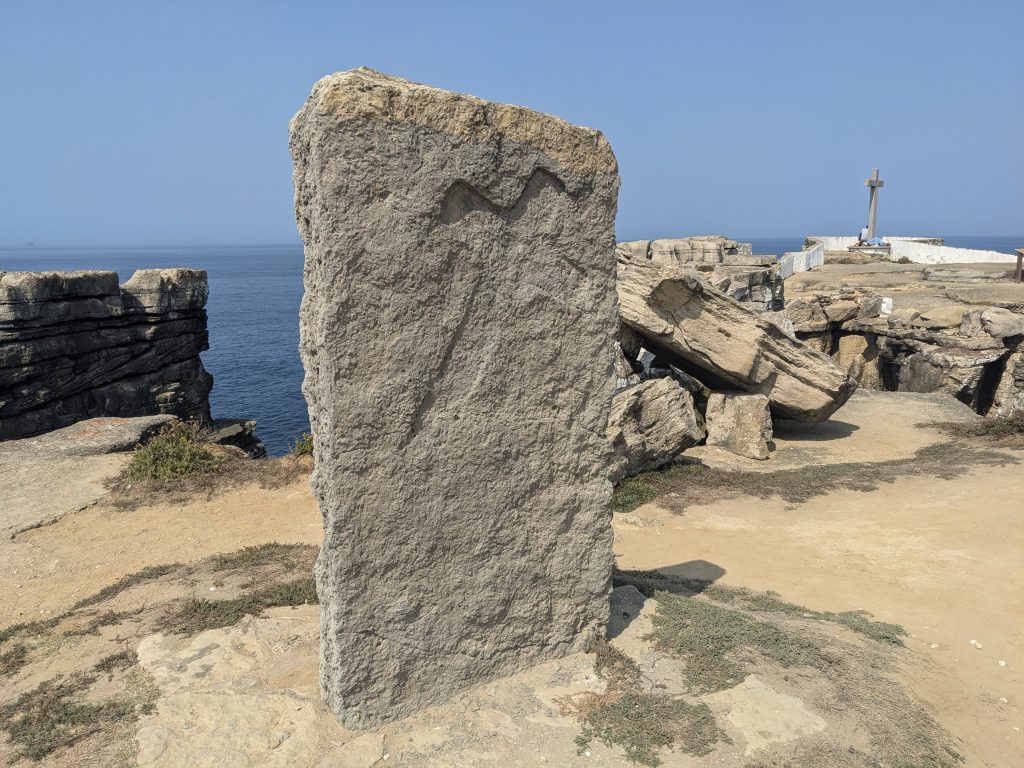
Today’s drive was our longest – almost 3 hours to get to Evora, mostly rural passing some villages and many cork tree forests and cattle on the side of the roads. We were all delighted with our accomodations in Evora and the town itself. We stayed in the old town at Casa Morgado Esporao located on Rua de Isabela. Our room was a spacious studio with a small kitchen, living room, large bedroom and a huge bathroom. We are on the main level and all the rooms open up to courtyard. We loved the old red entrance door you climb through, tall people need to watch their heads.
The main square, Praca do Giraldo, is a short walk from our hotel. It has been the town’s public space since the Muslim occupation. The square was used for the town market and now has a few dining spots, a fountain and a church. Named for Giraldo the Fearless, a Christian knight who reconquered the city from the Muslims in the 12th century.
A simple pizza dinner near the University was sufficient. The University of Evora is in session and the streets were full of groups of students, the older ones in capes hazing the incoming freshmen.
Evora has been a walled town since Roman times. The whole town is designated as a World Heritage Site. It is an attractive town with many vestiges of it’s Moorish occupants in 8th century. It has many narrow roads which were never designed for cars, several palaces and an elaborate cathedral.
Sep 20 – Exploring Evora
We sent the guys in the morning to find a laundromat. I sent them with a copy of Rick Steve’s Portugal book, mistakely thinking maybe they might read about the town key sites in Evora. Bill threw the book in the laundry bag and gave it to the attendant to empty into a machine. Along with our dark clothes went a bag of laundry sheets and my book. Well the book got thoroughly washed and left a trail of paper remnants on all the clothes. It pissed me off but I did not say much other than “you two are such idiots”. Not sure why I thought anyone would actually read about the town. Luckily I had some backup info on what to see.
The Cathedral of San Francisco was built in the 12th and 13th centuries in a Gothic style – simple and sparse. It was originally a convent and has been through many periods of transition, reconstruction, neglect until the most recent upgrades in 2015. The Cathedral is best known for it’s ossuary called the Chapel of Bones. The interior walls of this small, 16th-century chapel are lined with the bones & skulls of 5000 monks. The bones were gathered from various Evora churchyards by three monks in the early 1600s. They wanted the wealthy citizens of Evora to meditate on the transience of material things in the undeniable presence of death. Upstairs is a museum of sacred art and a collection of nativity scenes donated by a private collector.
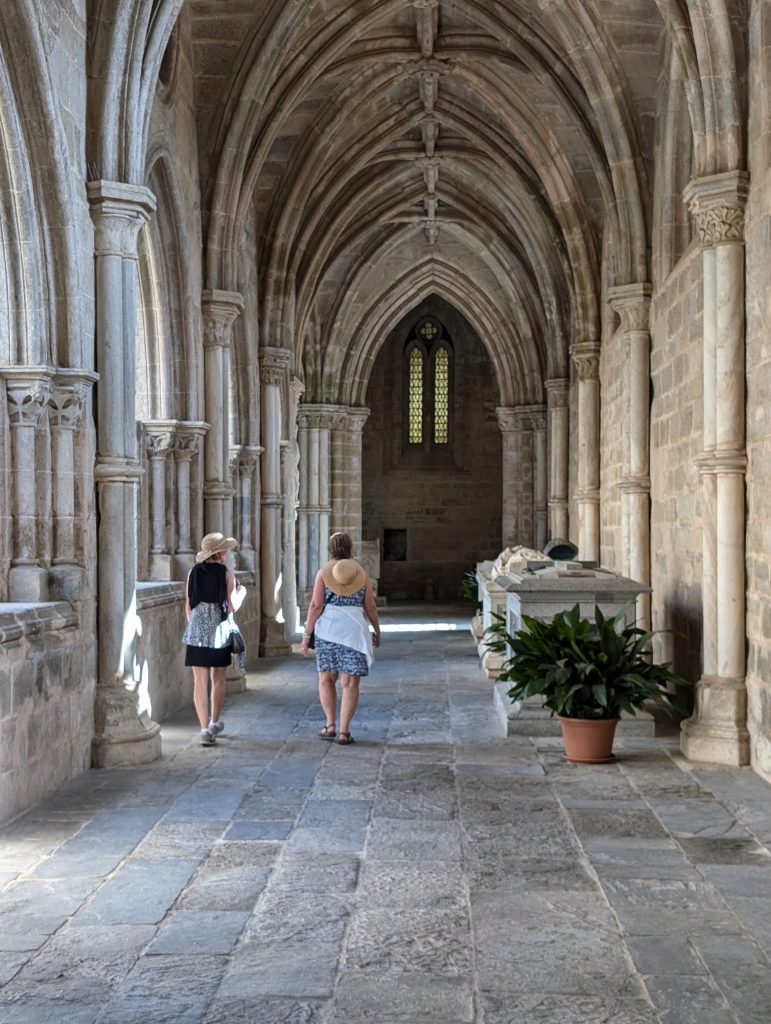
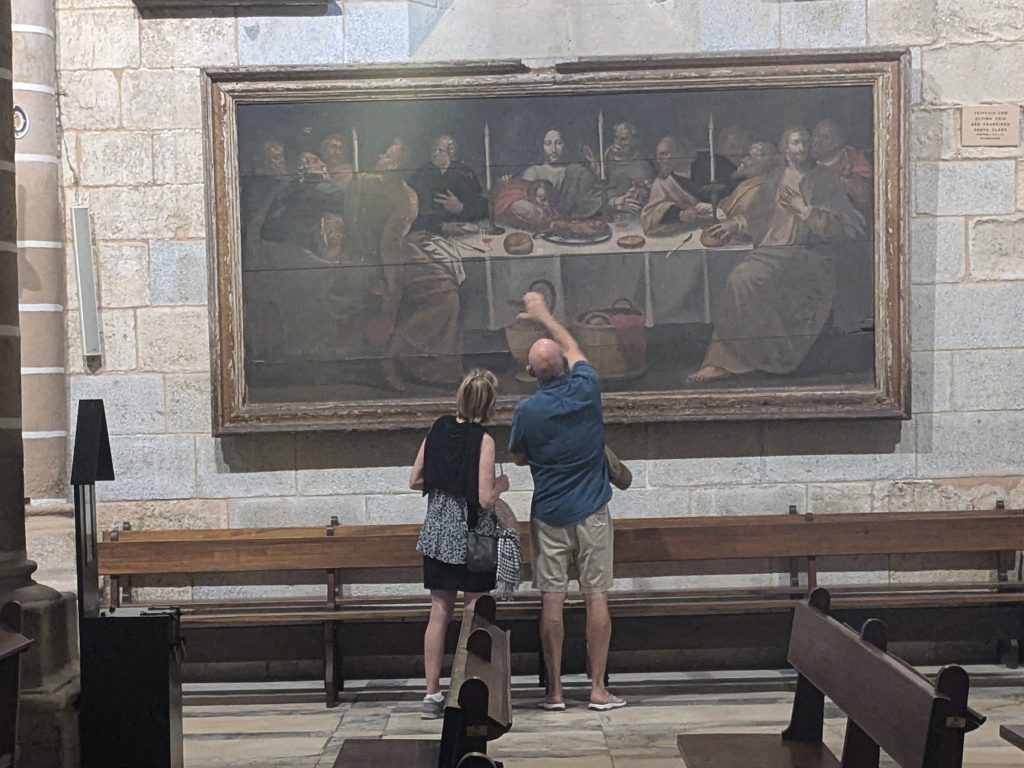
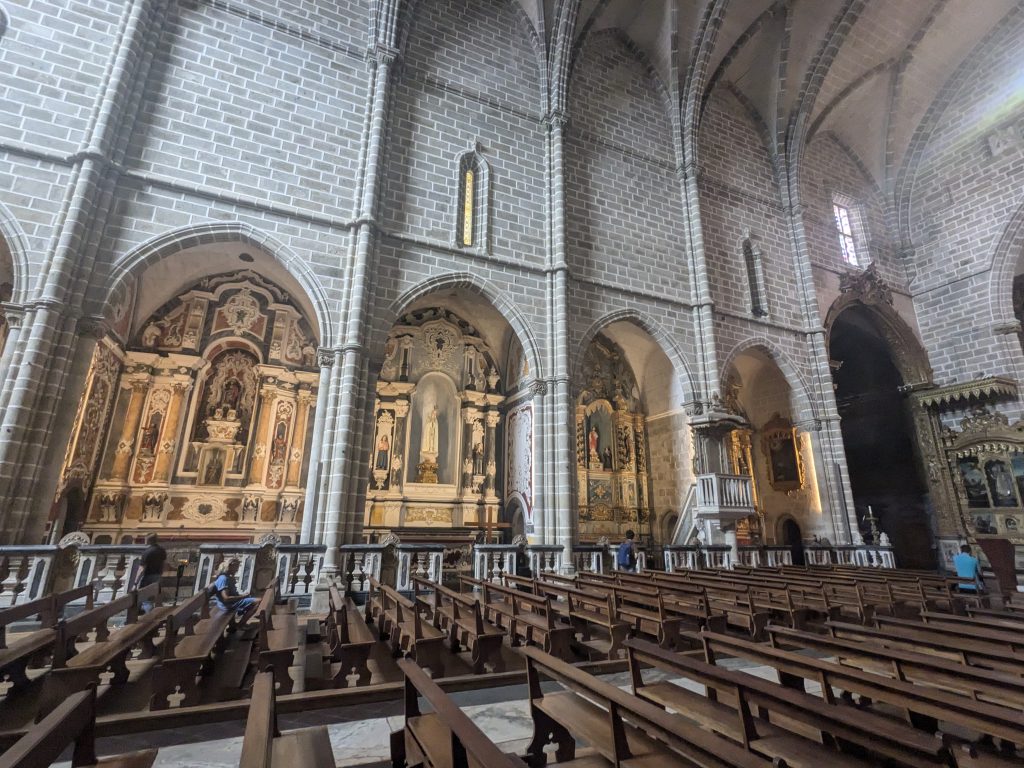
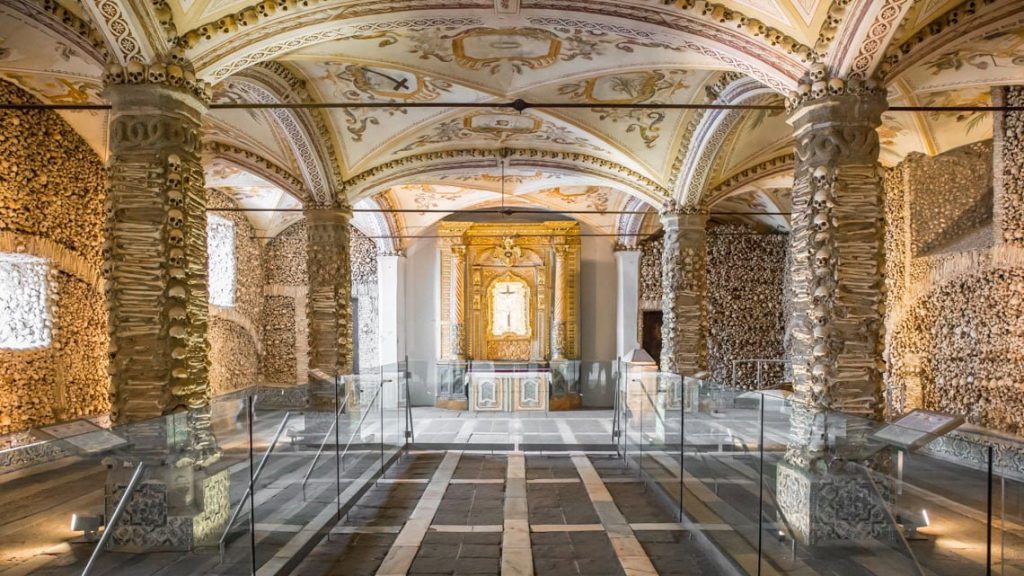
The Roman Temple sits in the middle of a square. It was built in the 1st century by the Romans. In 1321 it was enclosed and used as butcher shop until mid 1800s. Supposedly it was surrounded in three sides by a water mirror (reflecting pool). Excavations and removal of medieval additions happened in 1871 to reveal the original Roman design. Today open air concerts are staged in front of the temple. The temple sits up above the road so the best place to take photos is from the adjacent library. The Bibliotheca Public is in a beautiful building with many rare books and students studying.
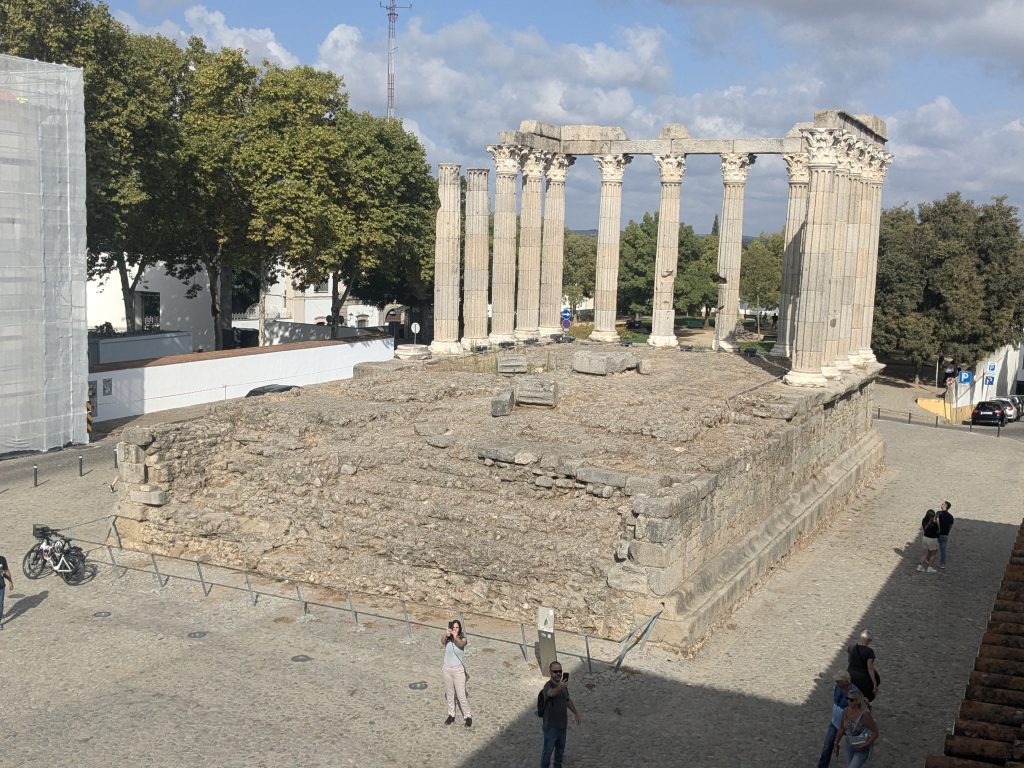
Near the Roman Temple is the massive Cathedral de Santa Maria, the largest cathedral in the country. Also known as Evora Cathedral (Se), construction began in 12th century and over the years had been a Christian Visigothic chapel, then a mosque and later the current church after the Reconquista. The Museum of Sacred Art had a few interesting displays including a gem laden reliquary with a piece of the original cross and a folding statue of the virgin Mary showing the scenes of her life on inside. A walk through the quiet cloisters reveals a tight spiral stairway to the rooftop. From up high there are grand views of town and Alentejo plains. The bell towers are on the roof and chime every 15 minutes.
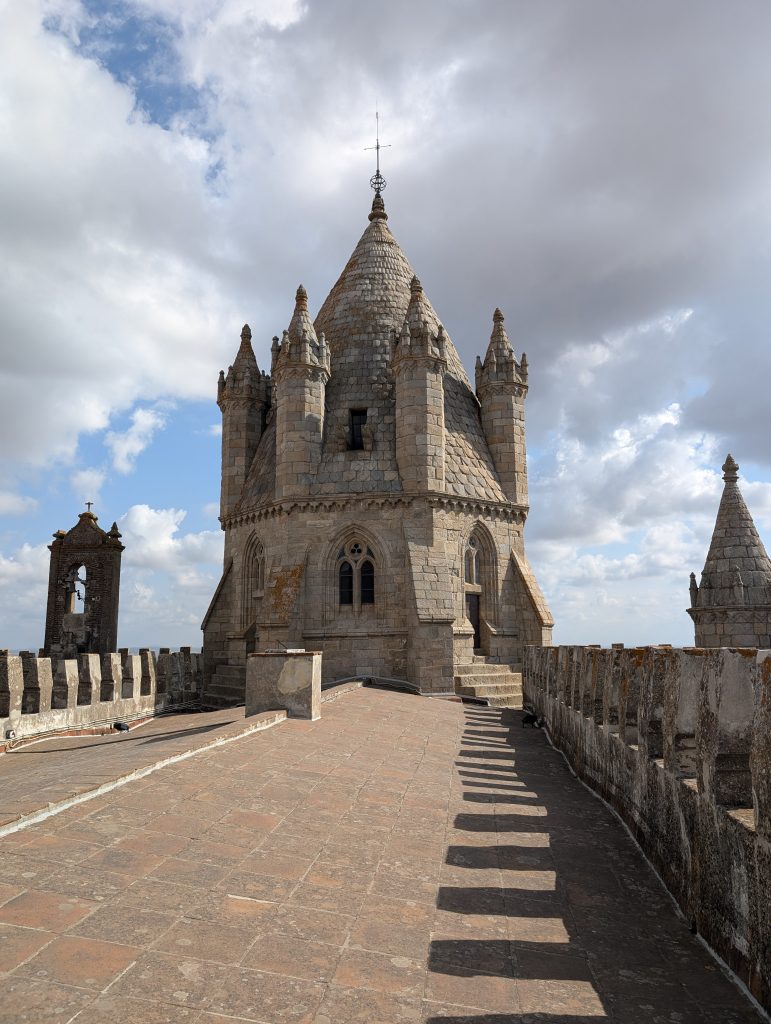
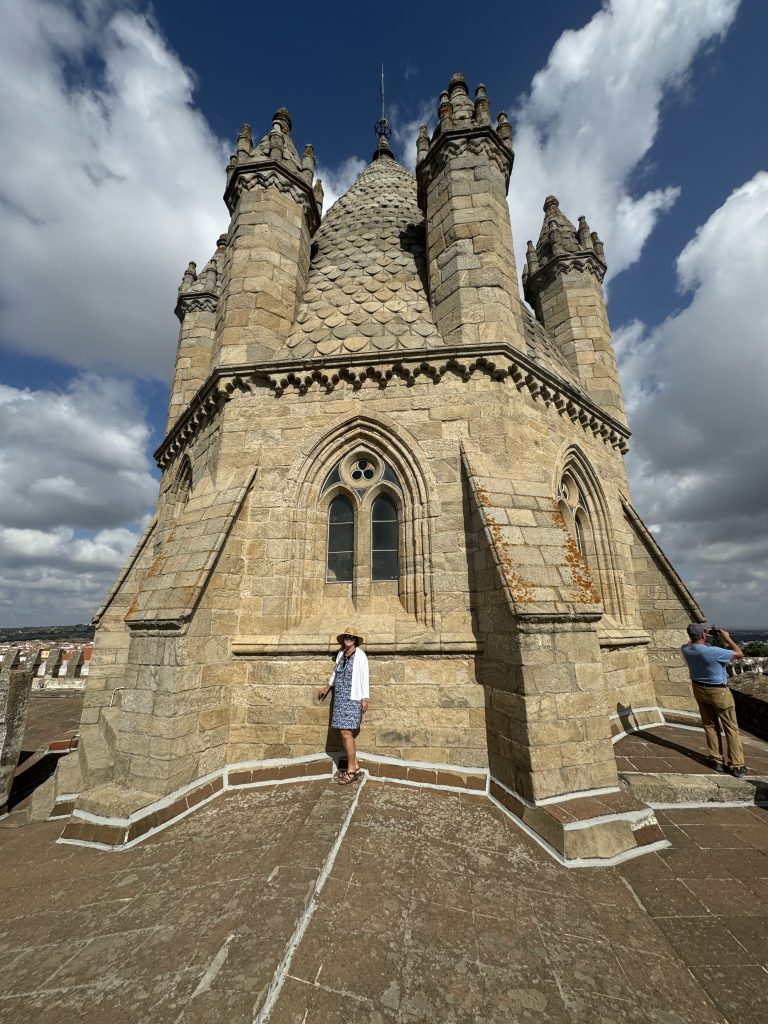
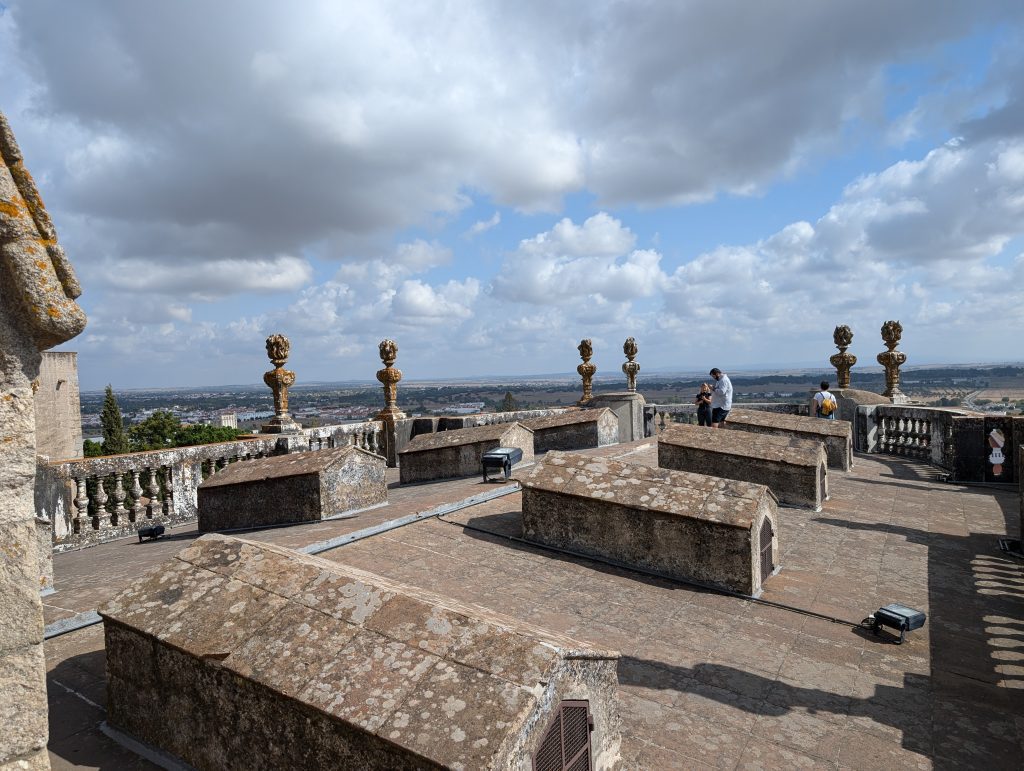

We walked to our dinner at the highly rated Taberna Típica Quarta-feira. Getting there on foot was like a game of Frogger as we dodged the cars speeding through the long narrow streets. There is no menu and you get the chefs choices with maybe 15 different items. I hated that we were so full by the time the main meat dishes arrived that we left half of the entrees – oxtail rice, black pig pieces and beef cheeks. Then dessert arrived and I tasted every one of the six sweets. Way too much food and the ladies declared the next day would be one of moderation.
